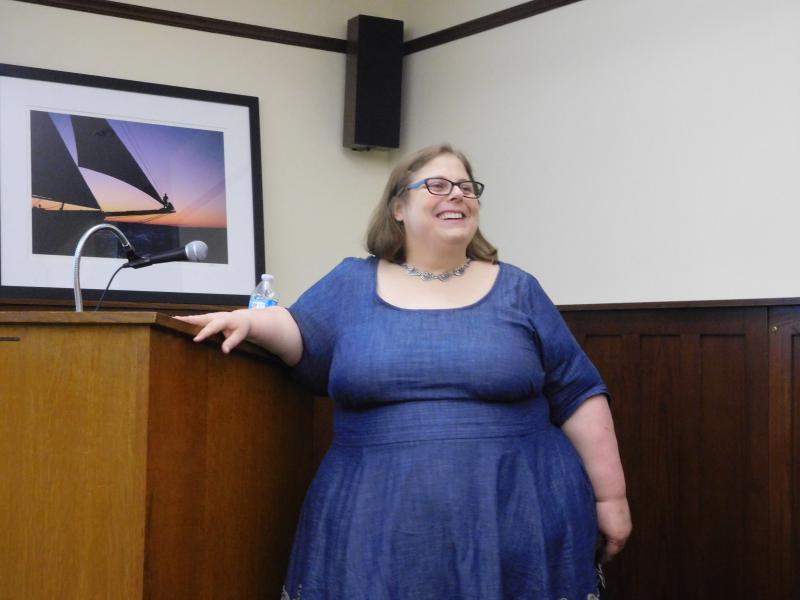‘Sister Arts’ lecture pairs great poems with other masterpieces
MATTAPOISETT— The Mattapoisett Free Public Library hosted a lecture on Friday evening by Dr. Josephine Yu, who used the talk to explore the varied ways that poets have depicted paintings, photographs, statues, illuminated manuscripts, and even films in their poems.
Susan Pizzolato, the Library Director and a poetry fan, introduced Yu not only with her credentials as outlined by poetry critics, but also with the library credentials she has observed.
“We have a pretty good contemporary poetry section, and now Josephine’s book is part of it... And almost always checked out!” Pizzolato said.
Yu, who teaches at Keiser University in Florida, started the lecture by explaining that she got its title, “Sister Arts,” from the greek term ekphrasis, which is a vivid description of a form of art. She had prepared a packet of poems, and a slideshow with visual examples of works of art that had been referenced by various poets for her presentation.
Some of the works of art were famous, such as “Landscape with the Fall of Icarus,” which is commonly attributed to Pieter Bruegel, or someone copying one of his works, or Vincent Van Gogh’s “Starry Night.” Others were less famous, such as E.J. Bellocq’s Storyville photographs, or a poem about a statue of the Virgin of Guadalupe that Marion resident Elizabeth Farrell submitted to Yu with no visual attached.
The poems took remarkably different approaches to the artworks that they referenced. Some, like W.H. Auden’s “Musée des Beaux Arts” or U.A. Fanthorpe’s “Not My Best Side,” tackled dark subject matter or corny imagery with humor. Others, like Anne Sexton’s “The Starry Night,” showed deep despair. Some poems were ornate in their descriptions, while others, like Williams Carlos Williams’ poem “Landscape with the Fall of Icarus” were sparse.
The effect for audience members was a journey through a wide range of emotions and themes.
In the Halloween spirit, Yu even included snippets of the zombies from “Night of the Living Dead,” paired with contemporary poet Kim Addonizio’s poem, “Night of the Living, Night of the Dead.”
The poem takes an at-times lighthearted approach to the film, stepping into the zombie’s thoughts for a humorous and unexpected section of the poem before ending on a more nightmarish portion in which the events of the film repeat again and again, scaring even the zombies.
However, Yu’s poetic analysis, which she wove in with historical facts about the artworks and poets in her talk, shone when interpreting the poem.
“So this is a particularly interesting ekphrastic project, to try to both translate and then transform and go beyond the film and find some meaning,” Yu said. “I think we could perhaps interpret this as a parable about perhaps addicts trapped in this cycle, seeking the same thing over and over. I think there are probably a lot of metaphors that we could imagine in these zombies.”















